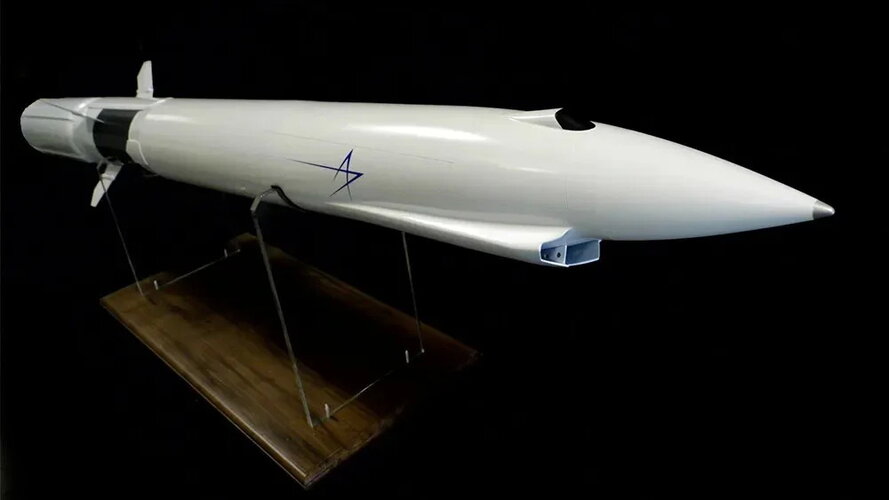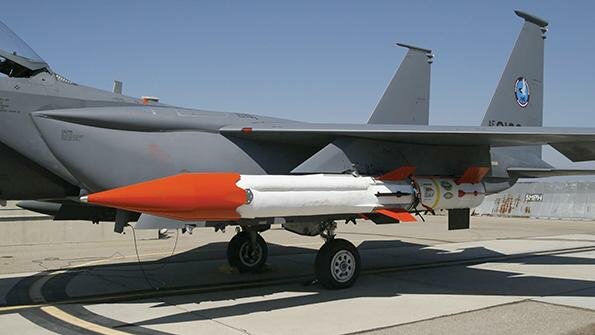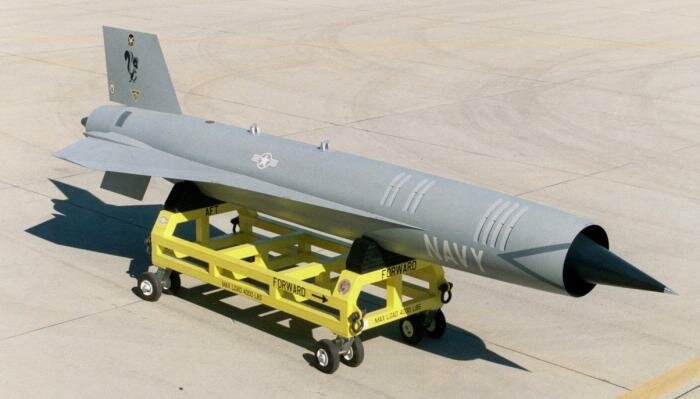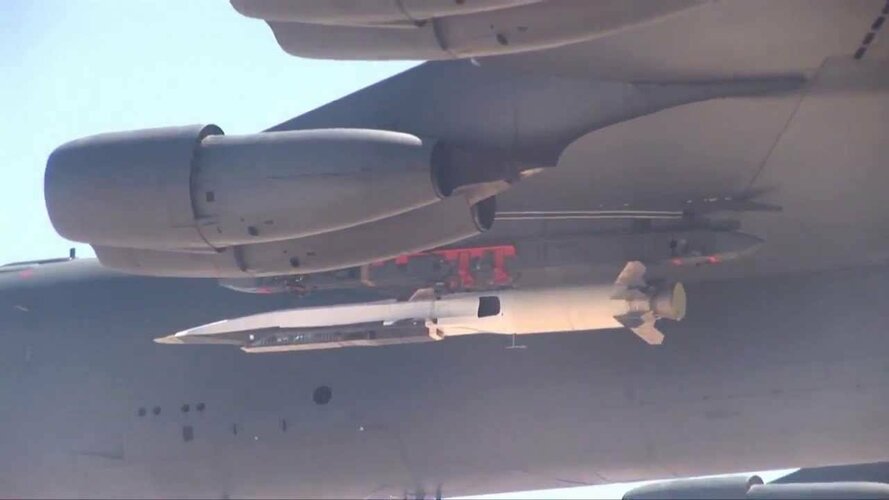The relationship between HAWC and HACM is quite similar to the relationship between X-32 and X-35 with F-35 program. Same can be said about TBG and ARRW.It reads like HACM and ARRW are the projects the USAF is going ahead withThat reads like they've already decided both programs are failures.
You are using an out of date browser. It may not display this or other websites correctly.
You should upgrade or use an alternative browser.
You should upgrade or use an alternative browser.
Lockheed Martin AGM-183 Air-Launched Rapid Response Weapon (ARRW)
- Thread starter Moose
- Start date
TBG is certainly a failure at this point since it supposed to test the glider for ARRW. But I think HAWC has been quite useful for the development of HACM. At this point, HAWC is very similar to X-32/X-35 or YF-22/YF-23. I actually really like the fact that they will make the decision on HACM this September instead of making a million prototype and proof of concept programs that will not result in any working hypersonic weapon. US need their own "air launched zircon" rather than another X-51/HyflyThat reads like they've already decided both programs are failures.
Richardson: TBG and HAWC Can Still 'Inform' Other Hypersonic Efforts | Air & Space Forces Magazine
The head of Air Force Materiel Command explained why the HAWC and TBG hypersonic programs still have value.www.airforcemag.com
Last edited:
There are two successfully tested prototypes by two venders, both with 3D printed combustors. Whatever the weakness in the TBG or ARRW programs, the scramjet research seems very much on track. And who knows, maybe the ARRW end to end test later this year knocks it out of the park.
The USAF however seems luke warm on the AGM-183. I think the weight and cost are making it look less and less attractive compared to the seemingly mature scramjet technologies.
The USAF however seems luke warm on the AGM-183. I think the weight and cost are making it look less and less attractive compared to the seemingly mature scramjet technologies.
Last edited:
bring_it_on
I really should change my personal text
- Joined
- 4 July 2013
- Messages
- 3,637
- Reaction score
- 3,748
That reads like they've already decided both programs are failures.
Richardson: TBG and HAWC Can Still 'Inform' Other Hypersonic Efforts | Air & Space Forces Magazine
The head of Air Force Materiel Command explained why the HAWC and TBG hypersonic programs still have value.www.airforcemag.com
It reads like the program officials saying that they've squeezed out as much as they could from HAWC in so far as the two OEM's designs and submissions for the AF's HACM program. Since HACM will chose a vendor within the next 3-6 weeks that point is valid. The AF is also moving ahead with focusing on the production side of scramjet engines. OEMs will obviously continue to learn from the remaining tests for HAWC and future work on MoHAWC but the weapon program has what it needs. Same with ARRW since AUR testing is slated for late Q3 / early Q4 this year while the TBG can continue to focus on the second design and integrating a data link into the glider.
One can form any sort of conclusion on the TBG program without knowledge to actual programatic details. It is feeding ARRW, and the entire reason for ARRW existing is because the glider was designed, developed and to some extent even prototyped via TBG. So if ARRW flies its AUR successfully it would only be because of the TBG program. The reason there isn't a clear cut demarcation b/w TBG and ARRW as it exists with HAWC and HACM is because the previous administration moved "Up" the transition plan and started a weapons program while the technology feeder effort was still in the works. This was a deliberate decision by Will Roper and co to accelerate fielding of the operational prototypes. HACM follows a more traditional handoff.TBG is certainly a failure at this point since it supposed to test the glider for ARRW.
The USAF however seems luke warm on the AGM-183 however.
The service is not. The service secretary and his hand-picked acquisition boss are. Expect Congress to fight this if the program moves past its remaining milestones.
Last edited:
aonestudio
I really should change my personal text
- Joined
- 11 March 2018
- Messages
- 2,962
- Reaction score
- 7,474
Next Step in Making Air Force’s First Hypersonic Weapon
Barksdale personnel have successfully taken the first steps toward implementing the Air Force’s first air-launched hypersonic weapon. The Air-Launched Rapid Response weapon or ARRW, is scheduled to be
www.barksdale.af.mil
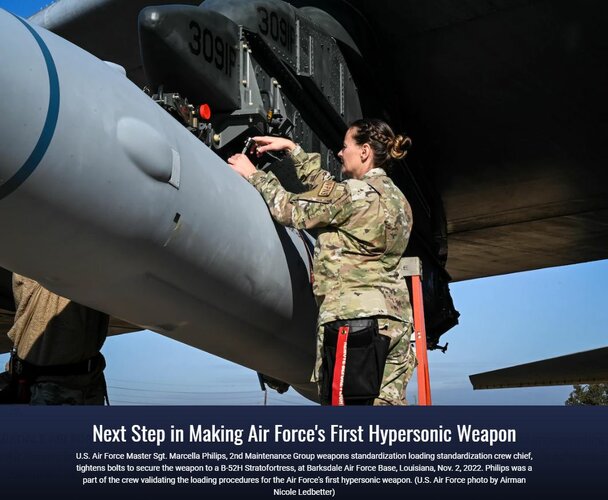
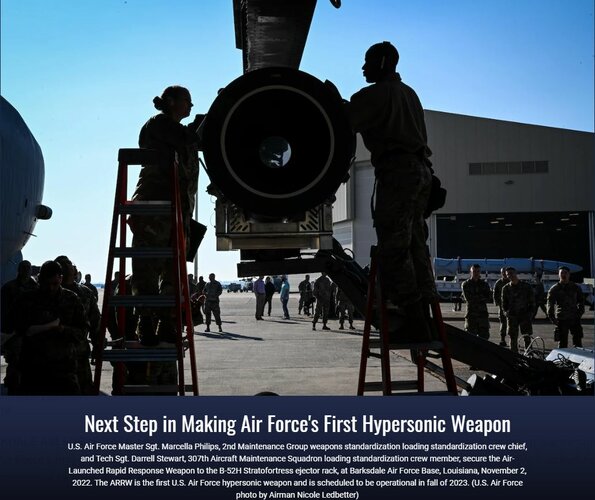
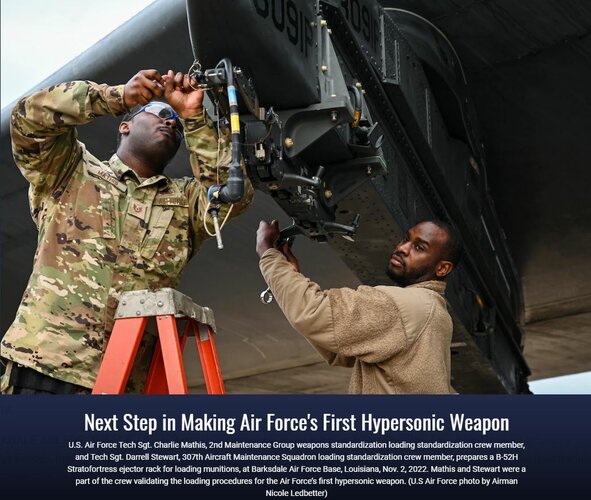
Forest Green
ACCESS: Above Top Secret
- Joined
- 11 June 2019
- Messages
- 9,415
- Reaction score
- 17,150
... is scheduled to be operational as early as fall 2023.
- Joined
- 9 October 2009
- Messages
- 21,928
- Reaction score
- 13,552
A tad optimistic perhaps?
HyFonic
ACCESS: Restricted
- Joined
- 5 March 2020
- Messages
- 43
- Reaction score
- 135
Ask, and you shall receive.I think the whole program might get binned if it doesn't have a successful test flight this month.
Fairly scarce on details, but it looks like they are happy, for once.
Air Force conducts first ARRW operational prototype missile test
Reached hypersonic speeds greater than five times the speed of sound, completed its flight path and detonated in the terminal area.
www.eglin.af.mil
aonestudio
I really should change my personal text
- Joined
- 11 March 2018
- Messages
- 2,962
- Reaction score
- 7,474

Three More Successful All-Up ARRW Tests Required Before Production Decision | Air & Space Forces Magazine
Before the Air Force makes a production decision on the ARRW hypersonic missile, it wants three more successful flight tests.

Three More Successful All-Up ARRW Tests Required Before Production Decision | Air & Space Forces Magazine
Before the Air Force makes a production decision on the ARRW hypersonic missile, it wants three more successful flight tests.www.airandspaceforces.com
The headline is a little click baity; the actual quote was:
'“We will need to analyze all four planned ATFs before making a determination” as to whether to enter production, the Air Force spokesperson said.'
That leaves some wiggle room for a less than successful test if the failure is something minor or easily correctable. But given the problems with the program and the per round expense of it, I think the only way USAF gets money out of Congress is with three straight successful tests, which is super challenging in this flight regime.
bring_it_on
I really should change my personal text
- Joined
- 4 July 2013
- Messages
- 3,637
- Reaction score
- 3,748
The headline accurately depicts the AF's position in that the program needs three additional tests to successfully conclude its flight test campaign following which a FY-2024 production decision could be made.
As far as expense, can you share the per round cost of a production ARRW over a 5-7 year LRIP -> FRP program of record? No. All you can state is the cost of operational prototypes which are produced in limited quantities as part of the current contract and thus are not indicative of the production cost under a PoR. So we really have no idea on AUR cost and cost effectiveness against the intended targets. Which is why the mid-tier program helps because instead of going into a PoR with a completely unknown system they would have actually build a half a dozen to a dozen operational prototypes, tested the thing half a dozen times and have a far better idea on its capabilities, costs, and benefits ahead of creating a program of record that could run a decade or longer. A $4-$6 MM price target for HACM, and $8-10MM price target for ARRW is probably a good estimate for production costs under anything besides a operational prototyping program production rates (which puts ARRW OP at roughly $12MM). This is probably cost-effective for its intended roles against intended targets. You aren't going to be buying thousands of rounds like you are with cheaper options like SiAW.
As far as expense, can you share the per round cost of a production ARRW over a 5-7 year LRIP -> FRP program of record? No. All you can state is the cost of operational prototypes which are produced in limited quantities as part of the current contract and thus are not indicative of the production cost under a PoR. So we really have no idea on AUR cost and cost effectiveness against the intended targets. Which is why the mid-tier program helps because instead of going into a PoR with a completely unknown system they would have actually build a half a dozen to a dozen operational prototypes, tested the thing half a dozen times and have a far better idea on its capabilities, costs, and benefits ahead of creating a program of record that could run a decade or longer. A $4-$6 MM price target for HACM, and $8-10MM price target for ARRW is probably a good estimate for production costs under anything besides a operational prototyping program production rates (which puts ARRW OP at roughly $12MM). This is probably cost-effective for its intended roles against intended targets. You aren't going to be buying thousands of rounds like you are with cheaper options like SiAW.
Last edited:
- Joined
- 21 April 2009
- Messages
- 13,732
- Reaction score
- 7,616

CBO Estimates $15-18 Million Cost Per ARRW Hypersonic Missile | Air & Space Forces Magazine
A report from the Congressional Budget Office offered estimates for different Air Force and Army programs and the cost per hypersonic missile.
Forest Green
ACCESS: Above Top Secret
- Joined
- 11 June 2019
- Messages
- 9,415
- Reaction score
- 17,150
It sounds like a lot but based on crap that's been happening only about 10% of ordinary cruise missile get through, so it could take 10x$2m to defeat the same target via current means.
Forest Green
ACCESS: Above Top Secret
- Joined
- 11 June 2019
- Messages
- 9,415
- Reaction score
- 17,150
I would have thought the air-breathing weapon would be more expensive.
I would have thought the air-breathing weapon would be more expensive.
Why? It’s a 3D printed combustor with no moving parts using JP-7 strapped onto a booster of roughly the size, energy, and cost of ATACMS that flies in the same thermal envelope as the burnout speed of some existing AAMs and SAMs. Once they get an aerodynamicly stable design finalized I can’t see why it wouldn’t be in the same price bracket as some of the higher end subsonic air breathing cruise missiles.
Specific Avionics and heat resilient material will keep the cost high for quite a long time.
If it stays in the the Mach 5-6 range, would it require materials much more exotic than long ranged SAMs?
- Joined
- 3 June 2011
- Messages
- 18,302
- Reaction score
- 12,121
They don't have to endure the heat as long. Supposedly SM-2 fins are known to char. Don't know what that means for SM-6 or if it were only SM-2 Block IVs.Specific Avionics and heat resilient material will keep the cost high for quite a long time.
If it stays in the the Mach 5-6 range, would it require materials much more exotic than long ranged SAMs?
Forest Green
ACCESS: Above Top Secret
- Joined
- 11 June 2019
- Messages
- 9,415
- Reaction score
- 17,150
Doesn't the SM-3 Blk1A/B have fins too (before it leaves the atmosphere that is)?
Doesn't the SM-3 Blk1A/B have fins too (before it leaves the atmosphere that is)?
Yes, the Mk-104 DTRM powered second-stage.
Even if standard missiles aren’t up to a continuous Mach 5+ environment, it surely is much easier to engineer something to sustain those temperatures for five minutes than it is to engineer a double digit Mach glider over 10-30 minutes of flight (higher altitude and thinner air, but still much higher thermal stress). I still think HACM could be an order of magnitude cheaper than a B/G hypersonic. Say, ~$5 million. SM-6 is already 4 mil.
This "first" hypersonic missile BS is total false advertising. Skybolt was at least 50% faster, had a much larger payload, and flew 60 years ago. Sure, it was twice as large, but had double the performance.
"hypersonics" should only refer to air-breathing vehicles; that's the way it used to be at least.
"hypersonics" should only refer to air-breathing vehicles; that's the way it used to be at least.
Forest Green
ACCESS: Above Top Secret
- Joined
- 11 June 2019
- Messages
- 9,415
- Reaction score
- 17,150
Skybolt was a dumb warhead, and is quoted as having the same range as AGM-183A, so likely the same speed in reality, despite wiki specs.
aonestudio
I really should change my personal text
- Joined
- 11 March 2018
- Messages
- 2,962
- Reaction score
- 7,474
Air Force conducts second ARRW test flight
Launch focused on the ARRW’s end-to-end performance.
www.edwards.af.mil
Published March 24, 2023
EGLIN AIR FORCE BASE, Fla. – A B-52H Stratofortress released the second All-Up-Round AGM-183A Air-launched Rapid Response Weapon off the southern California coast March 13, 2023.
This test was the second launch of a full prototype operational hypersonic missile and focused on the ARRW’s end-to-end performance. The test met several of the objectives and the ARRW team engineers and testers are collecting data for further analysis.

Air Force mum on whether latest ARRW hypersonic test was successful - Breaking Defense
An Air Force press release said that the missile was launched in a second all-up-round test and met “several objectives,” but conspicuously left out claims of overall success.

US Air Force conducts hypersonic test, but full results are unclear
The Air Force said in a release that "several" objectives were met, but refused to detail further the results of the test.
- Joined
- 3 June 2011
- Messages
- 18,302
- Reaction score
- 12,121
AGM-183 is a single-stage with a glider whereas Skybolt was a 2-stage ballistic missile. The speed most commonly given for Skybolt is 9500 mph but that sounds high for its range. I have a hard time believing a single-stage AGM-183 would get anywhere near that.Skybolt was a dumb warhead, and is quoted as having the same range as AGM-183A, so likely the same speed in reality, despite wiki specs.
- Joined
- 3 June 2011
- Messages
- 18,302
- Reaction score
- 12,121
Which almost certainly means it failed. Again. "Several objectives" could be as minor as, "well, at least the batteries weren't dead this time and it actually fell off the plane when it should have."
Air Force conducts second ARRW test flight
Launch focused on the ARRW’s end-to-end performance.www.edwards.af.milPublished March 24, 2023
EGLIN AIR FORCE BASE, Fla. – A B-52H Stratofortress released the second All-Up-Round AGM-183A Air-launched Rapid Response Weapon off the southern California coast March 13, 2023.
This test was the second launch of a full prototype operational hypersonic missile and focused on the ARRW’s end-to-end performance. The test met several of the objectives and the ARRW team engineers and testers are collecting data for further analysis.
Air Force mum on whether latest ARRW hypersonic test was successful - Breaking Defense
An Air Force press release said that the missile was launched in a second all-up-round test and met “several objectives,” but conspicuously left out claims of overall success.breakingdefense.com

US Air Force conducts hypersonic test, but full results are unclear
The Air Force said in a release that "several" objectives were met, but refused to detail further the results of the test.www.defensenews.com
I wonder how many test are left till they cancel it and pursuit some subsonic missileI wonder how many test-launches are left to go before the AGM-183A is approved for the LRIP phase?
I wonder how many test are left till they cancel it and pursuit some subsonic missile
Given how the Russians and the PLA are already deploying hypersonic weapons the US can't afford to drop this.
I don't know, like how Russian and PLA have ramjet missiles for years or mobile medium/long range land based air defense for years and US has nothingI wonder how many test are left till they cancel it and pursuit some subsonic missile
Given how the Russians and the PLA are already deploying hypersonic weapons the US can't afford to drop this.
I wonder how many test are left till they cancel it and pursuit some subsonic missileI wonder how many test-launches are left to go before the AGM-183A is approved for the LRIP phase?
Four were scheduled, though if a test occurred last week that would make it three.
I don't know, like how Russian and PLA have ramjet missiles for years or mobile medium/long range land based air defense for years and US has nothingI wonder how many test are left till they cancel it and pursuit some subsonic missile
Given how the Russians and the PLA are already deploying hypersonic weapons the US can't afford to drop this.
I don’t know where China is at, but Russia hardly seems to be knocking it out of the park in terms of non strategic weapons.
It appears the second test of the ARRW all-up-round March 13 was not a total success

 breakingdefense.com
breakingdefense.com

Air Force mum on whether latest ARRW hypersonic test was successful - Breaking Defense
An Air Force press release said that the missile was launched in a second all-up-round test and met “several objectives,” but conspicuously left out claims of overall success.
Forest Green
ACCESS: Above Top Secret
- Joined
- 11 June 2019
- Messages
- 9,415
- Reaction score
- 17,150
I think axing it at this point just means they'll have to come back later and spend the same money again to get back to the same place they are now.
So basically exactly what they have been doing for decades with ramjet/scramjet missilesI think axing it at this point just means they'll have to come back later and spend the same money again to get back to the same place they are now.
Similar threads
-
-
Hypersonic Conventional Strike Weapon (HCSW)
- Started by bring_it_on
- Replies: 30
-
-
-


